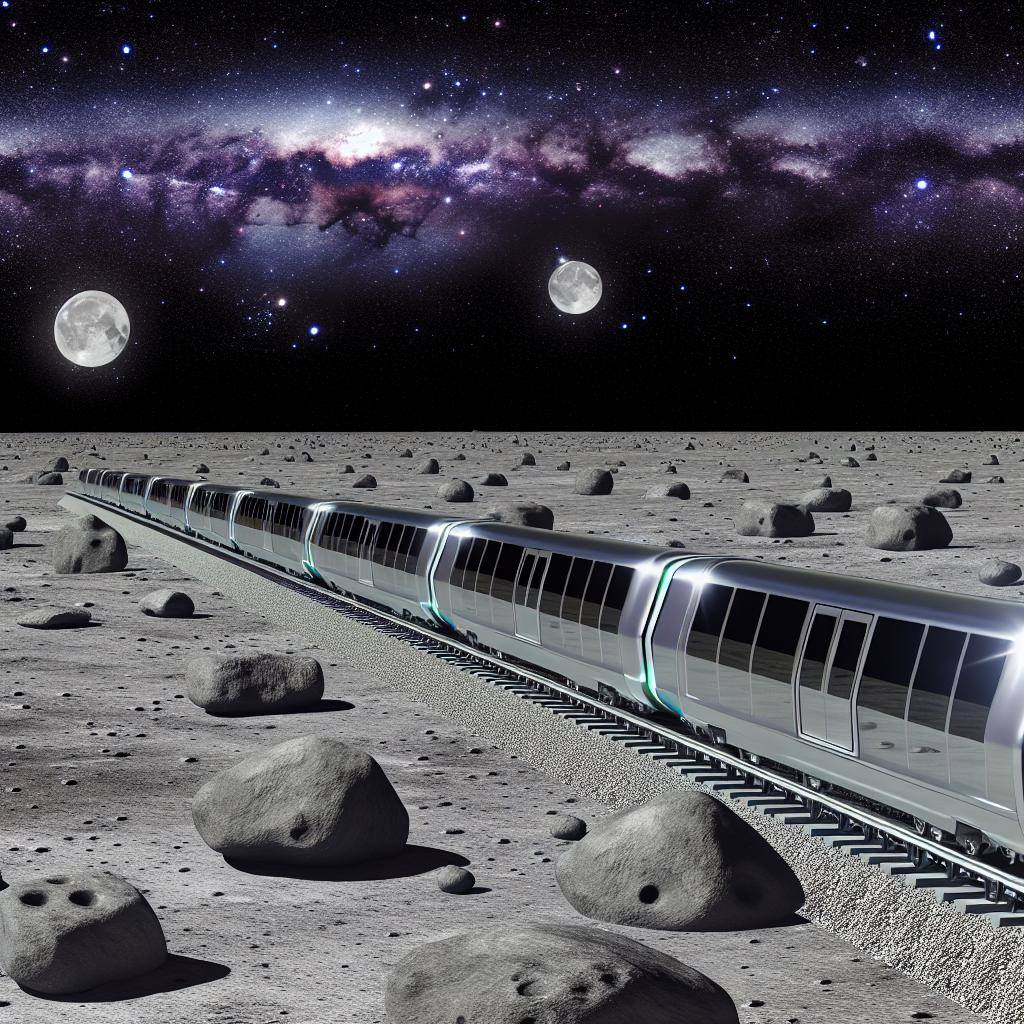Unveiling NASA's Lunar Railway Vision
NASA's vision for a lunar railway system is a bold step forward in space exploration. This ambitious project aims to establish a reliable and efficient mode of transportation across the Moon's surface. By creating a network of tracks and stations, astronauts and cargo can be transported with unprecedented ease, paving the way for more extensive lunar exploration and the potential for sustainable human presence on the Moon.
The concept involves leveraging cutting-edge technology and resources to overcome the unique challenges presented by the lunar environment. With the railway system, NASA envisions a future where the Moon becomes a hub for scientific research and a stepping stone for missions deeper into our solar system.
Engineering Challenges and Innovations
Engineering a railway system on the Moon presents a host of challenges, from the harsh vacuum of space to the extreme temperature fluctuations. One of the primary concerns is the lunar regolith, a fine and abrasive dust that covers the surface and can damage equipment. NASA's engineers are exploring innovative solutions such as magnetic levitation technology to mitigate this issue, which would allow the train cars to hover above the tracks, minimizing wear and tear.
Moreover, constructing infrastructure in an environment that lacks an atmosphere requires new approaches to materials and building techniques. The use of in-situ resource utilization (ISRU) is being considered to create construction materials directly from the lunar soil, significantly reducing the need for transport from Earth and promoting sustainability.
Benefits of a Lunar Railway System
The benefits of a lunar railway system extend far beyond the convenience of transportation. It would enable the transport of heavy equipment and supplies over long distances, which is crucial for establishing permanent bases and conducting scientific experiments. Additionally, a railway system would facilitate the exploration of previously inaccessible regions of the Moon, broadening our knowledge of its composition and history.
Another significant advantage is the potential for the railway to support future commercial endeavors, such as mining for valuable resources. By providing the necessary infrastructure, NASA can help pave the way for a new economy that leverages the Moon's unique resources and position in space.
Timeline and Phases of Construction
NASA's timeline for the Moon's railway system is ambitious yet methodical, with a phased approach that ensures each stage is carefully planned and executed. The initial phases will focus on surveying and mapping the proposed routes, followed by the establishment of a foundational network of tracks. Subsequent phases will expand the system, connecting key points of interest and potential settlement sites.
The project is part of NASA's broader Artemis program, which aims to return humans to the Moon and establish a sustainable presence by the end of the decade. The railway system is envisioned as an integral component of this program, with construction potentially beginning in the next few years as the necessary technologies and designs are finalized.
Future Prospects and Implications for Space Travel
The establishment of a lunar railway system has profound implications for the future of space travel. It represents a shift towards more permanent and sustainable exploration strategies, setting the stage for not just lunar exploration, but also serving as a model for transportation on other celestial bodies. The technologies and systems developed for the Moon could be adapted for use on Mars and beyond, aiding in humanity's quest to become a multi-planetary species.
Furthermore, the railway system will play a crucial role in supporting the logistics of long-term space missions. By providing a reliable means of transporting people and materials, it will be a cornerstone in the infrastructure that makes regular travel to and from the Moon not just a possibility, but a reality.



.jpg)
.png)
.png)


0 Comments